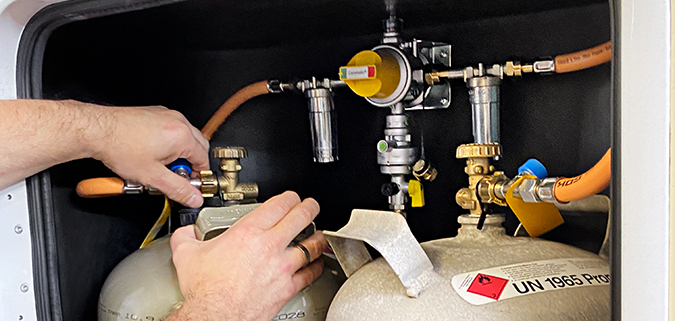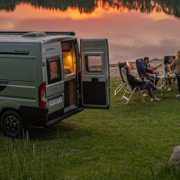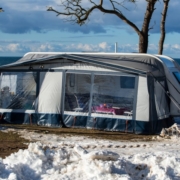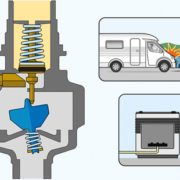Can I leave the gas cylinder open all the time in my motor caravan or caravan?
While sitting behind the wheel of your camper van, you ask yourself something all of a sudden: did I close the gas cylinder or the LPG tank before starting my journey, or is the gas system still open? Can it even be left open all the time? These questions must have been on many people’s minds. We answer these questions in our GOK blog.
***Update***
The following article only refers to the wall-mounted gas pressure regulation systems from GOK, in order to be able to operate the vehicle with LPG during the journey. The newly developed Caramatic SafeDrive also has an integrated crash sensor, but has a completely different system design. More information here:
Closing the gas cylinder while driving?
As a general rule, it is necessary for campers to close the gas cylinder or LPG tank and/or the valve of the LPG tank while driving.If the driver fails to do this, it can have negative consequences, in the case of an accident with the leisure vehicle, for example. The piping could rupture or suffer considerable damage, and unburned LPG could escape as a result.
It is therefore mandatory to turn the valve of the gas cylinder or tank off completely every time before you embark on a journey with your motor caravan or caravan. The best thing to do is to close the valve first and to “open” a piece of consumer equipment briefly again to relieve the pressure reducer and the piping – that is, to allow the enclosed gas to escape.
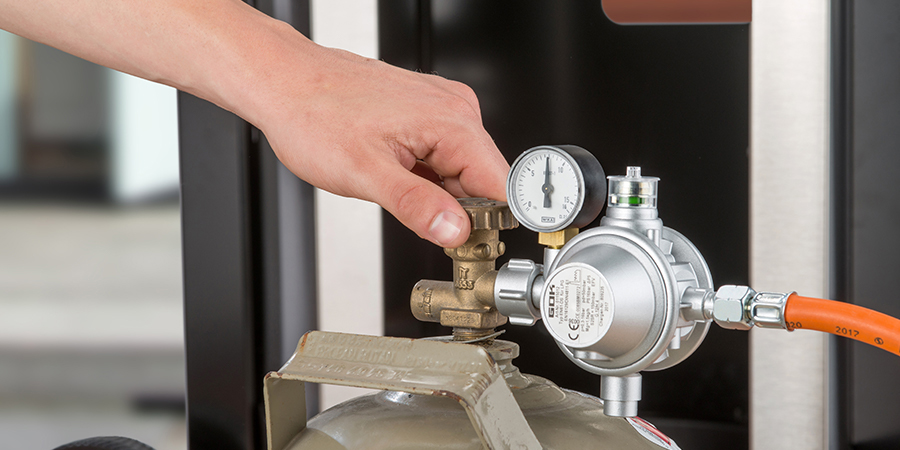
Before starting their journey with their motor caravan or caravan, it is necessary for campers to close the gas cylinder and/or gas cylinder valve, unless…
An exception applies in the case of…
As mentioned above, while driving with a motor caravan or caravan, the gas cylinder must be closed. This is always the case, unless the LPG system in the leisure vehicle has two special safety devices: a crash sensor and an excess flow valve.
…a crash sensor
The crash sensor with pendulum from GOK provides protection in the “worst case scenario”. In the case of an accident with the motor caravan or caravan, the crash sensor will trigger and stop the gas flow. This prevents unburned LPG from escaping. The crash sensor is an integral part of the following pressure regulation systems: Caramatic DriveOne (for single-cylinder systems) and Caramatic DriveTwo (for two-cylinder systems).
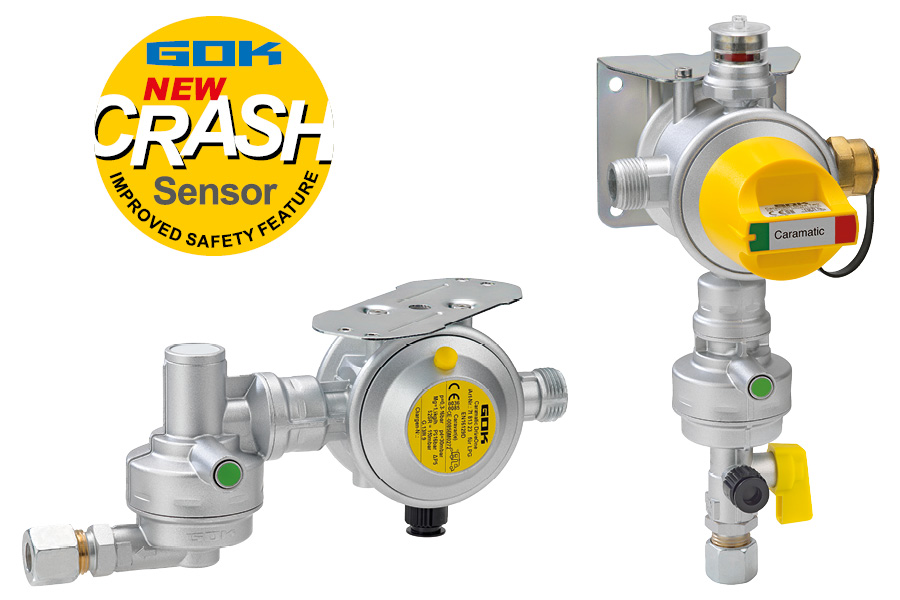
These are a requirement for the gas supply in motor caravans or caravans while driving: the Caramatic DriveOne (left) or the Caramatic DriveTwo (right) – each with a crash sensor.
…an excess flow valve
The excess flow valve is located between the gas cylinder and pressure regulation system and/or gas filter – if one has been installed. If the hose assembly ruptures or a major leakage occurs, the excess flow valve stops the gas flow.
What this actually means: if, for example, you have an LPG system with the Caramatic DriveTwo and an integrated crash sensor and excess flow valve in your vehicle, you can operate your gas heating system while driving. Conversely, this also means that in this case, you don’t need to ask yourself whether you closed the gas cylinder(s) or the tank or not before embarking on your journey.
This is because those with a crash sensor and excess flow valve are able to leave the LPG tank open at all times and enjoy double the comfort.
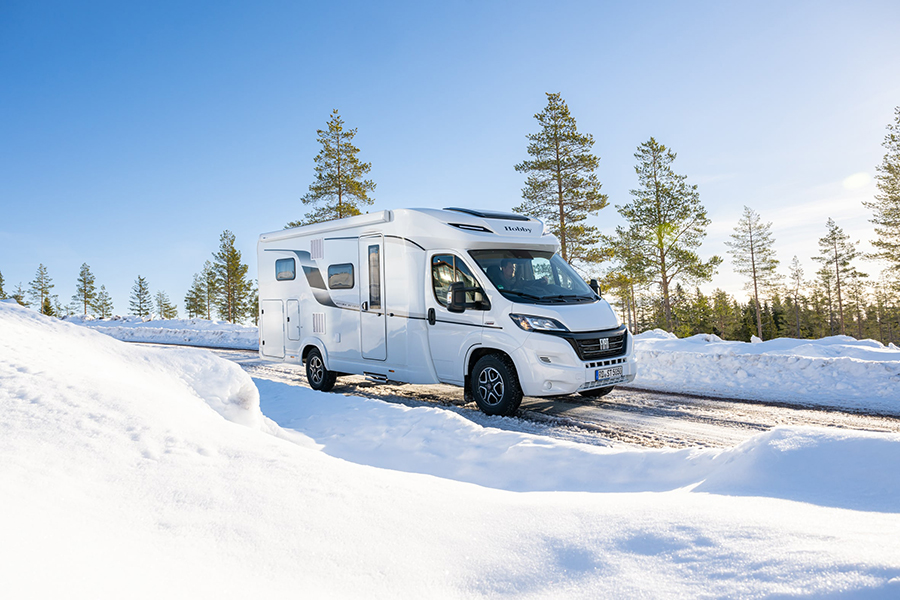
Those who have the above-mentioned safety devices on board are also able to operate their gas heating system while driving and don’t have to worry about whether they have closed the gas cylinder or not!
© Hobby-Wohnwagenwerk, Ing. Harald Striewski
Regulatory page
For persons who are particularly interested, we wanted to examine the regulatory component for the sake of completeness. After all, many campers are familiar with the DVGW Code of Practice G 607, which governs the operation and maintenance of the gas system at the national level. This code of practice refers to DIN EN 1949 (the European standard for the installation of gas systems in leisure vehicles), which, among others, specifies the requirements if an individual wishes to use LPG equipment while driving.
Here, it is further stipulated that specific safety devices (crash sensor and excess flow valve) are required to operate the gas system while driving.
In both Code of Practice G 607 and DIN EN 1949, it is clearly stipulated that the valve of the gas cylinder or LPG tank has to be closed while driving unless the crash sensor and excess flow valve are part of the gas system.
